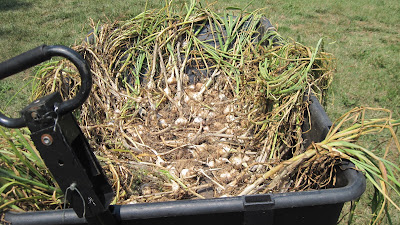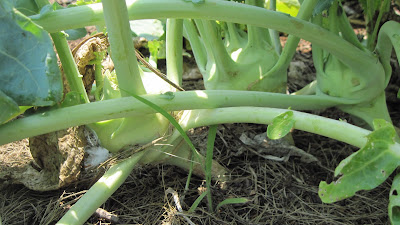Eleven young chickens peck around all day, attacking insect pests and occasionally, young seedlings, which I try to overlook because I think generally they're doing a good job, especially on the Mexican bean beetles. We're fattening a few rabbits, too, the worst of the pests. A few humans show up quite often, because the garden's in full production now and if all goes well, will supply our table with fresh groceries until October or November.
Of course, she has cohabitants, from towering sunflowers to prone garlics. The garlic has been gradually saying goodbye.
The sunflowers want to stay around a while. Their seed pattern reminds me of running with John Zerger, a mathematician, who in turn reminded me of Fibonacci from a college mathematics class, maybe group theory.
You might notice two series of curves, one winding one way, the other winding the other way. As I recall, the number of spirals going each way is different -- typically 34 and 55, 55 and 89, or 89 and 144 -- part of the Fibonacci sequence -- 1, 2, 3, 5, 8, 13, 21, 34, 55, 89, 144.... (notice that each number is the sum of the two preceding numbers).
"Whoopee!" says Virginia, "and why is that?"
I understand it's the most efficient way of filling the space, but we'll leave the proof of that to someone else some other day.
My sister might be envious of this row of vegetables.
Kohlrabi
This year, for fun, I planted some spaghetti squash.
"I guess you planted this next guy for the squirrels?" says Virginia.
Yes, for the giant squirrels that live in the manor, this vies with butternut as their favorite squash.







